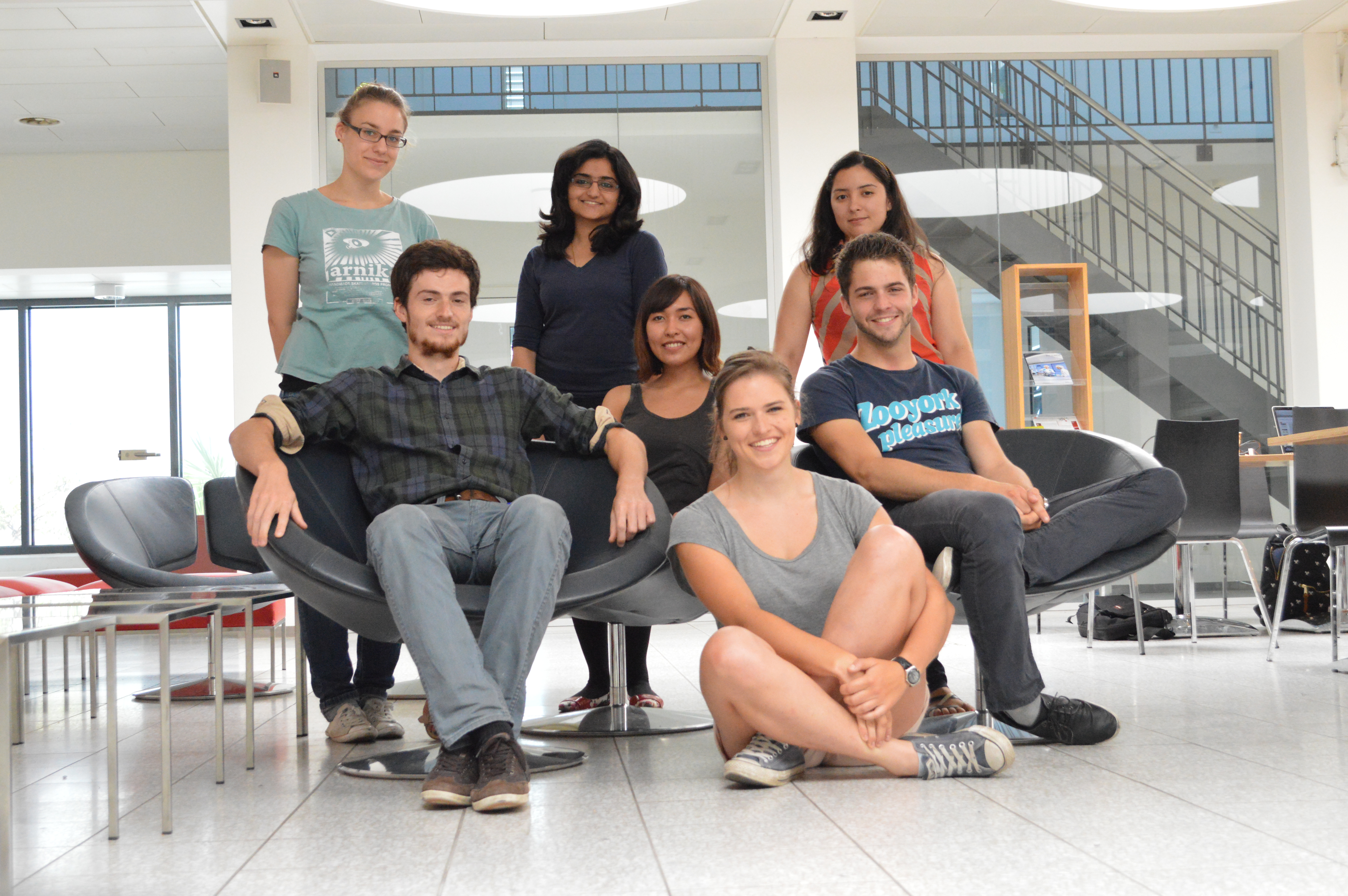Team:ETH Zurich
From 2013.igem.org
| Line 12: | Line 12: | ||
</li> | </li> | ||
<li> | <li> | ||
| - | <a href="/Team:ETH_Zurich/Project"> | + | <a href="/Team:ETH_Zurich/Project"><img src="https://static.igem.org/mediawiki/2013/9/92/Posterpic.png"/></a> |
<p style="font-size:15px"><b>From Minesweeper to Colisweeper</b><br>Almost all the features known from the original Minesweeper game can be found in Colisweeper as well. The gamefield is replaced by mine and non-mine colonies on a agar plate.Due to AHL communication and signal processing, they express different hydrolase enzymes. Through pipetting the colorless substrate solutions turn into different colors which indicates the role of the played colony. You always have the possibility to mark colonies as mines with flags using the second substrate solution. | <p style="font-size:15px"><b>From Minesweeper to Colisweeper</b><br>Almost all the features known from the original Minesweeper game can be found in Colisweeper as well. The gamefield is replaced by mine and non-mine colonies on a agar plate.Due to AHL communication and signal processing, they express different hydrolase enzymes. Through pipetting the colorless substrate solutions turn into different colors which indicates the role of the played colony. You always have the possibility to mark colonies as mines with flags using the second substrate solution. | ||
</p> | </p> | ||
Revision as of 09:13, 13 September 2013
Colisweeper is an interactive, biological version of the Minesweeper computer game, based on luxI/luxR quorum sensing and chromogenic enzymatic reactions. The goal is to clear an agar “minefield” without detonating mines.
Genetically engineered Escherichia coli colonies are used as sender-cells (mines) and receiver-cells (non-mines). Mines secrete the signaling molecule N-(3-oxohexanoyl)-l-homoserine lactone (OHHL) whereas non-mines process the signal. To distinguish between OHHL-levels, a library of PLuxR promoters with various sensitivities was created through site-saturation mutagenesis. High-pass filters were constructed to control the expression of different orthogonal hydrolases in non-mines, depending on the number of surrounding mines.
Additionally, the mines express their own hydrolase.A spatiotemporal reaction-diffusion model was established to evaluate and improve the system. To play Colisweeper, a colorless substrate solution is pipetted onto a colony of choice. The result is a defined color change within minutes, allowing identification of the played colony and the number of mines surrounding it.
 "
"







